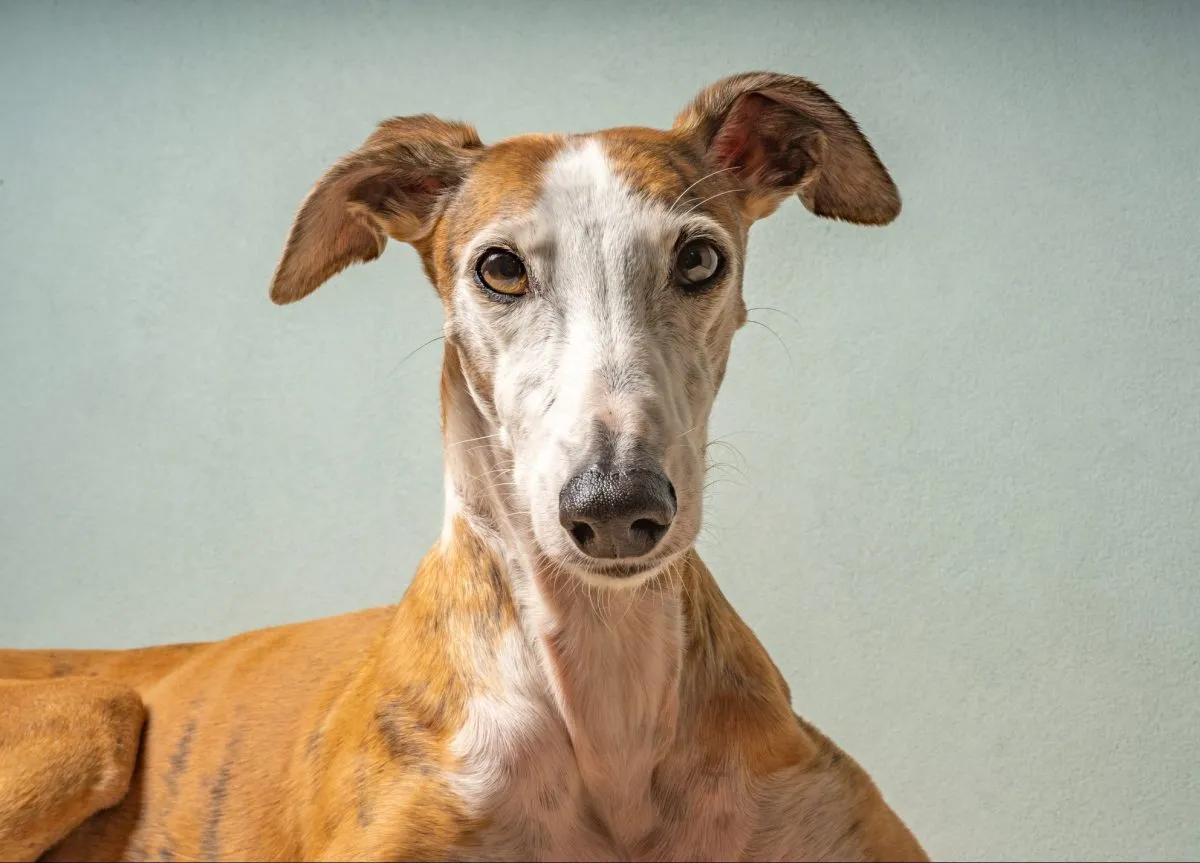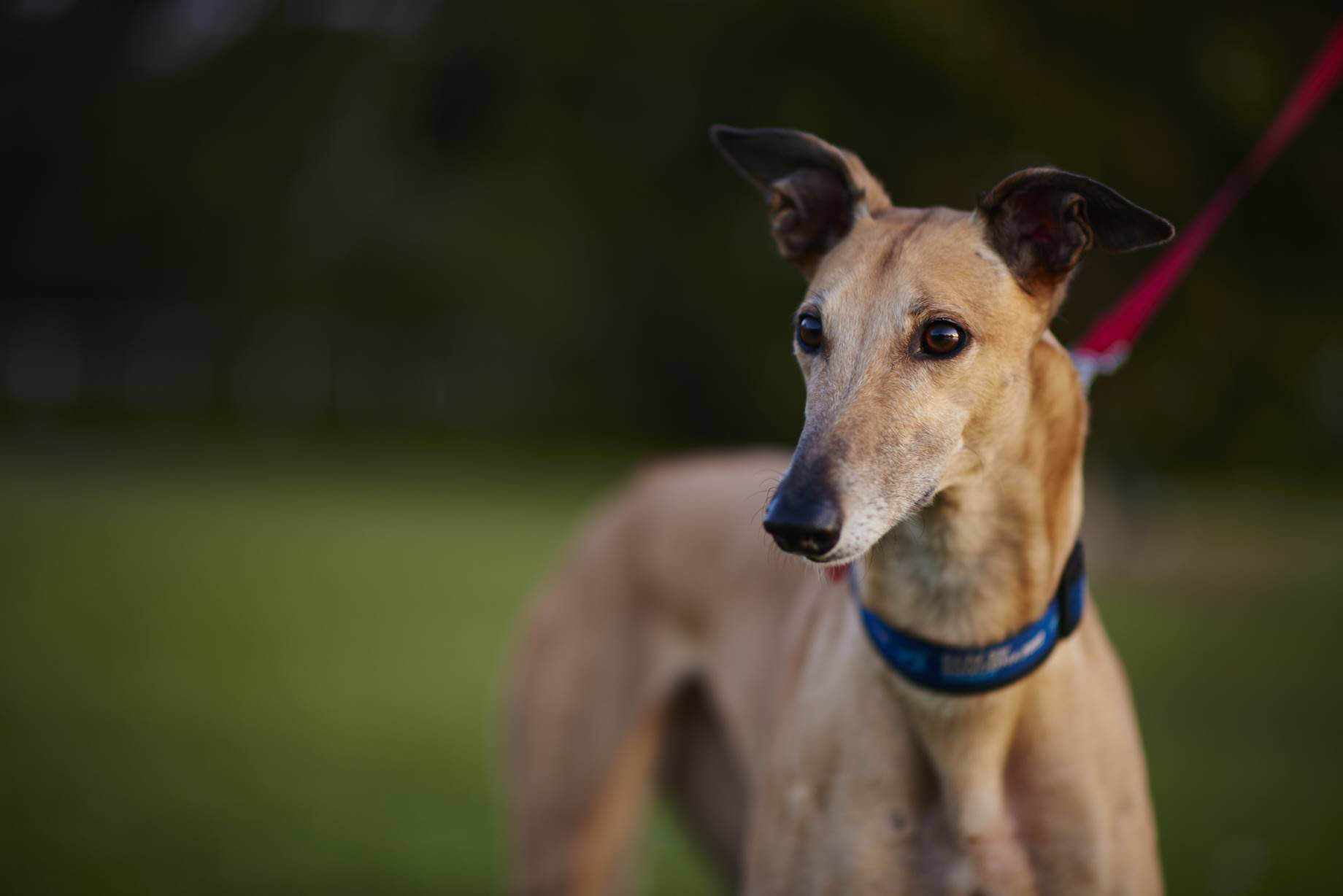When you hear the word "greyhound," chances are your mind immediately conjures up images of sleek, graceful dogs racing at lightning speeds. But there's so much more to these majestic creatures than meets the eye. Greyhounds are not just athletes; they're also loyal companions, gentle souls, and a breed with a rich history that dates back thousands of years. If you're thinking about bringing one of these beauties into your life, you're in for a treat.
Now, let's dive into the world of greyhounds. These dogs have been around for centuries, and their legacy is nothing short of impressive. From ancient Egypt to modern-day homes, greyhounds have captured the hearts of many. Their elegance, speed, and gentle demeanor make them a favorite among dog lovers worldwide. But before you get swept away by their charm, there's a lot to learn about these magnificent animals.
In this article, we'll explore everything you need to know about greyhounds – from their fascinating history to their unique characteristics, and how to care for them. Whether you're a seasoned dog owner or a first-timer, this guide will give you all the tools you need to understand and appreciate these amazing dogs. So, let's get started and discover why greyhounds are truly one of a kind!
Read also:Matthew Charles Czuchry The Rising Star Redefining Hollywood
Table of Contents
- The Fascinating History of Greyhounds
- Physical Characteristics of Greyhounds
- Understanding the Temperament of Greyhounds
- Greyhound Health: What You Need to Know
- Diet and Nutrition Tips for Greyhounds
- Exercise Needs of Greyhounds
- Adopting a Greyhound: Is It Right for You?
- Training Your Greyhound: Tips and Tricks
- Grooming and Care for Greyhounds
- Fun Facts About Greyhounds
The Fascinating History of Greyhounds
Greyhounds have been around for a long, long time. In fact, they're one of the oldest dog breeds in existence. Archaeologists have found depictions of greyhound-like dogs on ancient Egyptian tombs dating back over 4,000 years. These dogs were considered sacred and were often buried alongside their owners, showing just how valued they were in society.
Fast forward to medieval Europe, and greyhounds were still highly regarded. They were the dogs of choice for nobility, who used them for hunting. Their incredible speed and keen eyesight made them perfect for chasing down fast-moving prey like hares and deer. Back then, owning a greyhound was a status symbol, and only the wealthy could afford to keep them.
By the 19th century, greyhounds had made their way to the racetracks. Dog racing became a popular sport, and greyhounds quickly became the stars of the show. Their ability to reach speeds of up to 45 mph (72 km/h) made them the fastest dogs on the planet. But as time went on, people began to realize that these dogs were more than just racers; they were also loving companions.
Modern-Day Greyhounds
Today, greyhounds are beloved family pets. Many retired racing greyhounds find new homes with loving families, and they adapt beautifully to life as a house pet. Their gentle nature and calm demeanor make them ideal for people of all ages, including families with children.
But don't let their laid-back personality fool you. These dogs still have that racing spirit, and they love to run when given the chance. Whether it's a quick sprint in the backyard or a visit to the dog park, greyhounds need regular exercise to stay happy and healthy.
Physical Characteristics of Greyhounds
Let's talk about what makes greyhounds so visually stunning. These dogs have a unique combination of speed, grace, and athleticism that sets them apart from other breeds. Standing at an average height of 27-30 inches (69-76 cm) for males and 25-28 inches (63-71 cm) for females, greyhounds are built for speed.
Read also:What Is Facetune And Why You Need To Know About It
One of the most striking features of greyhounds is their sleek, muscular body. Their long, slender legs and deep chest allow them to reach incredible speeds in just a few strides. And let's not forget about their signature curved tails, which help them maintain balance while running at high speeds.
When it comes to coat colors, greyhounds come in a wide variety of shades, including:
- Grey
- Black
- White
- Red
- Blue
- Brindle
Despite their athletic build, greyhounds are surprisingly lightweight, weighing in at around 60-88 pounds (27-40 kg) for males and 50-70 pounds (23-32 kg) for females. This lightweight frame allows them to move with incredible agility and speed.
Understanding the Temperament of Greyhounds
Now that we've covered their physical attributes, let's talk about what makes greyhounds so special on the inside. Contrary to popular belief, greyhounds are not high-energy dogs. In fact, they're often referred to as "40 mph couch potatoes" because they love to lounge around and relax when they're not running.
Greyhounds are known for their gentle and affectionate nature. They form strong bonds with their owners and enjoy spending time with their human family. While they may not be the most playful dogs, they do love a good cuddle session on the couch or a quiet walk around the neighborhood.
Another great thing about greyhounds is their adaptability. They can thrive in a variety of living situations, from apartments to large homes with yards. As long as they get enough exercise and mental stimulation, they're happy wherever they are.
Socializing with Other Dogs
Greyhounds generally get along well with other dogs, especially if they've been properly socialized. Their calm demeanor makes them a good fit for multi-dog households, but it's always a good idea to introduce them slowly to other pets in the home.
When it comes to cats, greyhounds can be a bit more unpredictable. Some greyhounds have a strong prey drive and may chase after smaller animals, while others are perfectly content to coexist peacefully with feline friends. It all depends on the individual dog and how well they've been trained.
Greyhound Health: What You Need to Know
Like all breeds, greyhounds are prone to certain health issues. As a responsible owner, it's important to be aware of these potential problems so you can take steps to prevent them or catch them early. Some common health concerns in greyhounds include:
- Bone cancer: Greyhounds are more susceptible to osteosarcoma, a type of bone cancer, than many other breeds.
- Cardiac issues: While greyhounds are generally healthy, some may develop heart problems later in life.
- Sensitivity to anesthesia: Greyhounds have a lower percentage of body fat compared to other dogs, which can make them more sensitive to certain medications.
Regular vet check-ups and a healthy lifestyle can go a long way in keeping your greyhound in tip-top shape. Feeding them a balanced diet, providing plenty of exercise, and keeping up with vaccinations are all crucial to maintaining their overall health.
Diet and Nutrition Tips for Greyhounds
Feeding your greyhound the right diet is essential for their health and well-being. As large, active dogs, they have specific nutritional needs that must be met to keep them in peak condition.
First and foremost, greyhounds need a high-quality diet that's rich in protein. Look for dog food that lists meat as the first ingredient, and avoid foods with fillers like corn and soy. Greyhounds also need a good balance of fats and carbohydrates to fuel their active lifestyles.
It's important to feed greyhounds the right amount of food to prevent obesity, which can lead to a host of health problems. As a general rule, adult greyhounds should be fed about 2-3 cups of food per day, divided into two meals. However, this can vary depending on their age, weight, and activity level.
Exercise Needs of Greyhounds
As we've already mentioned, greyhounds are built for speed. But they don't need as much exercise as you might think. While they love to run, they don't require hours of intense activity every day. Instead, they benefit from short bursts of exercise, like a sprint in the backyard or a visit to an open field where they can let loose.
In addition to running, greyhounds also enjoy daily walks. These walks not only provide them with much-needed exercise but also give them an opportunity to explore their surroundings and socialize with other dogs and people.
Remember, greyhounds are sensitive to extreme temperatures, so it's best to avoid exercising them during the hottest or coldest parts of the day. Early morning or late evening walks are ideal, especially in warmer climates.
Adopting a Greyhound: Is It Right for You?
If you're considering adopting a greyhound, you're making a wonderful decision. These dogs make fantastic companions and can bring a lot of joy to your life. But before you take the plunge, there are a few things to consider.
First, think about your lifestyle. Do you have the time and resources to care for a dog? Greyhounds may not need as much exercise as some other breeds, but they still require attention, love, and proper care. If you're ready to commit to a lifelong companion, a greyhound might be the perfect fit for you.
Another thing to keep in mind is that many greyhounds available for adoption are retired racing dogs. These dogs may have some quirks or behaviors that come from their time on the track, but with patience and training, they can adapt beautifully to life as a pet.
Training Your Greyhound: Tips and Tricks
Training a greyhound can be a rewarding experience, but it does require a bit of patience and consistency. Greyhounds are intelligent dogs, but they can also be a bit stubborn at times. The key to successful training is to make it fun and rewarding for them.
Positive reinforcement is the best approach when training a greyhound. Use treats, praise, and playtime as rewards for good behavior. Avoid harsh punishment or yelling, as this can damage the trust between you and your dog.
One of the first things you'll want to teach your greyhound is basic obedience commands like "sit," "stay," and "come." These commands are essential for keeping your dog safe and well-behaved in various situations. Once they've mastered the basics, you can move on to more advanced training, such as agility or trick training.
Grooming and Care for Greyhounds
Grooming a greyhound is relatively simple compared to some other breeds. Their short, sleek coats require minimal maintenance, but regular brushing can help keep their coat shiny and healthy. A bath every few months is usually sufficient unless they get into something messy.
Don't forget about their nails! Greyhounds can be sensitive about having their paws touched, so it's important to start nail trimming early and make it a positive experience. Regular dental care is also important, as greyhounds can be prone to dental issues as they age.
Finally, make sure your greyhound has a comfortable bed to rest on. These dogs love to lounge, and a good bed can help prevent pressure sores and other issues related to their thin coat and bony frame.
Fun Facts About Greyhounds
Before we wrap up, here are some fun facts about greyhounds that you might not know:
- Greyhounds are the fastest dogs in the world, capable of reaching speeds of up to 45 mph.
- They have a unique running style called the double suspension gallop, which allows them to cover more ground with each stride.
- Greyhounds have been featured in many works of art and literature throughout history, including paintings by artists like Leonardo da Vinci.
- Despite their racing background, greyhounds are actually quite calm and laid-back at home.
As you can see, greyhounds are truly remarkable dogs with a lot to offer. Whether


